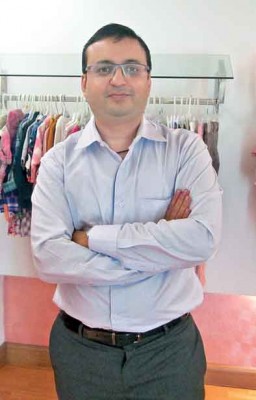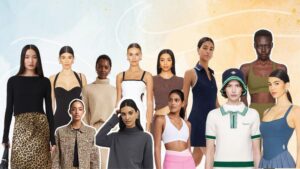
A brain child of Navneet Bhagat who came to Bangladesh in 1994 and in a short span of seven years founded his own sourcing company Fortunex Ltd., catering largely to US retailers like JCPenney, Walmart, Sears, Academy, Kohl’s and Indian retailers like ITC (John Players), Arvind Retail, to mention a few. Armed with work experience as the CEO of Lenny Fashions, now a part of Must Group, Navneet was joined by his cousin Gaurav Nagpal and since then there has been no looking back. Today, in addition to the buying operations, the company has two manufacturing units – Sterling Style and Simba Fashions, catering to H&M, Zara and Gap producing value added garments for them. Gaurav Nagpal while interacting with Team Apparel Online shares challenges of buying operations and why it became so important to start their own manufacturing…
After functioning as a buying house for half a decade, Fortunex realized the huge potential in manufacturing and entered a partnership with local entrepreneur Fazbul Haq to initiate Sterling Style. “There are just 4000 factories in the country, which are growing at an average rate of 15-20% every year, taking the industry from US $ 10 billion in 2005 to US $ 22 billion today, which translates into great opportunities for manufacturing,” says Gaurav. The second reason to enter manufacturing was to capitalize on Bangladesh’s strength in producing basic garments as there are a few destinations left from where basics can be procured at such competitive prices because of scale of operations and low labour wages.
“While India is strong in value-added ladies garments and men’s shirt manufacturing, Sri Lanka is strong in lingerie and China in outerwear; our strength has been knits and bottom manufacturing. So the basic business is going to continue here for next 15 years,” says Gaurav.
Spurted by the success of Sterling, the company started the second independent unit, Simba Fashions in 2011. While Sterling Style has 16 lines, Simba has 8 lines and there are plans to double capacity in both units over the next two years. “Sterling would have 32 lines and Simba will have 16 lines; we will be growing constantly,” shares Gaurav according to whom they have also opened an office in US to move towards direct sales.
Concentrating more on the manufacturing side doesn’t mean that the buying operation would parish or even slowdown, as the buying operation has some very big and dedicated clients attached to it for the past 10 years. And since the buyers for the manufacturing operations are different there is no clash of interest. “Our buyers are in a way our partners so we have to keep addressing their need and run our buying business parallelly to do so,” justifies Gaurav whose buying operation turnover is US $ 40 million/annum and manufacturing turnover is US $ 35 million/annum.
Apt at handling day-to-day challenges for the smooth running of its buying as well as manufacturing operations, the company for one, has assured consistent business to 10 factories it is working with, overseeing all those factories which are socially and environmentally compliant according to the standards of a particular buyer along with volunteering to help them in increasing their capacities.
The challenge is also to retain margins to derive a win-win situation for the retailers, manufacturers and buying operations. The company constantly works on systems which increase productivity and reduce wastages. “No one can earn undue margins as every process has become so transparent right from fabric price to accessories and other input prices; one has to furnish a detailed cost breakups to the buyers. We ensure that we do the right consumption calculation and also we have nominated members and they know there are 100 others who are willing and waiting to grab the business from them so all have to work together as partners,” points out Gaurav.
Everyday challenges aside, Fortunex is now looking beyond the US and India, and has recently started to target the South American market with Mexico and Brazil the focus, and is even exploring Australia, Canada and Japan to take the advantage of duty-free regime. “We are trying not to rely on one market, and be too dependent on them. In 2003, 80-90% of Bangladesh’s export was dependent on the US; today it has come down to 40%, taking cue from the business spread, we would also develop new markets for ourselves,” concludes Gaurav.






